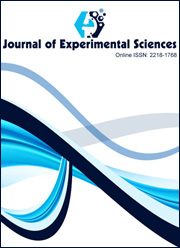Genotoxic effects of plant extracts on Anopheles gambiae: a comet assay study
DOI:
https://doi.org/10.25081/jes.2025.v16.9656Keywords:
Anopheles gambiae, Comet assay, DNA damage, Botanical Insecticides, Malaria Vector ControlAbstract
The increasing resistance of Anopheles gambiae to synthetic insecticides necessitates alternative vector control strategies, including plant-derived compounds. While previous studies have focused on the larvicidal and adulticidal effects of botanical extracts, their genotoxic potential remains poorly understood. This study evaluated DNA damage in A. gambiae exposed to methanol, ethanol, and ethyl acetate extracts of Eucalyptus citriodora, Azadirachta indica, and Albizia lebbeck using the alkaline comet assay. Adult female mosquitoes were exposed to 300 ppm of each extract for 24 hours, after which midgut cells were isolated and analyzed for DNA fragmentation. Results indicated significant solvent-dependent genotoxicity, with methanol extracts causing the highest DNA damage (78.6±3.8% tail DNA for E. citriodora, *p*<0.001). Ethyl acetate extracts exhibited the least genotoxicity (18-25% tail DNA). These findings suggest that plant-derived insecticides can induce substantial DNA alterations in A. gambiae, with implications for vector control strategies and resistance management.
Downloads
References
Aktar, M. W., Sengupta, D., & Chowdhury, A. (2009). Impact of pesticides use in agriculture: Their benefits and hazards. Interdisciplinary Toxicology, 2(1), 1-12. https://doi.org/10.2478/v10102-009-0001-7
Ayele, D. G., Zewotir, T. T., & Mwambi, H. G. (2012). Prevalence and risk factors of malaria in Ethiopia. Malaria Journal, 11, 195. https://doi.org/10.1186/1475-2875-11-195
Collins, A. R., Azqueta Oscoz, A., Brunborg, G., Gaivão, I., Giovannelli, L., Kruszewski, M., Smith, C. C., & Štětina, R. (2008). The comet assay: Topical issues. Mutagenesis, 23(3), 143-151. https://doi.org/10.1093/mutage/gem051
Conti, B., Benelli, G., Flamini, G., Cioni, P. L., Profeti, R., Ceccarini, L., Macchia, M., & Canale, A. (2012). Larvicidal and repellent activity of Hyptis suaveolens (Lamiaceae) essential oil against the mosquito Aedes albopictus Skuse (Diptera: Culicidae). Parasitology Research, 110, 2013-2021. https://doi.org/10.1007/s00436-011-2730-8
Frank, L. G., Omolo, M. O., Okumu, F. O., & Kokwaro, J. O. (2020). Standardization of plant extract preparation for bioassays against disease vectors. Journal of Ethnopharmacology, 256, 112696.
Sharma, G., Kapoor, H., Chopra, M., Kumar, K., & Agrawal, V. (2014). Strong larvicidal potential of Artemisia annua leaf extract against malaria (Anopheles stephensi Liston) and dengue (Aedes aegypti L.) vectors and bioassay-driven isolation of the marker compounds. Parasitology Research, 113, 197-209. https://doi.org/10.1007/s00436-013-3644-4
Singh, P. K., Kumar, S., & Kumar V. (2019). Assessment of DNA damage in mosquito gut cells using the comet assay. Journal of Insect Science, 19(3), 1-8.
Singh, P. K., Kumar, S., & Kumar, V. (2017). Comet assay: A versatile tool for assessing DNA damage in mosquitoes. Journal of Vector Biology, 42(2), 141-148.
Tice, R. R., Agurell, E., Anderson, D., Burlinson, B., Hartmann, A., Kobayashi, H., Miyamae, Y., Rojas, E., Ryu, J.-C., & Sasaki, Y. F. (2000). Single cell gel/comet assay: Guidelines for in vitro and in vivo genetic toxicology testing. Environmental and Molecular Mutagenesis, 35(3), 206-221. https://doi.org/10.1002/(SICI)1098-2280(2000)35:3<206::AID-EM8>3.0.CO;2-J
Tuetun, B., Choochote, W., & Rattanachanpichai, E. (2004). Mosquito repellency of the seeds of celery (Apium graveolens L.). Annals of Tropical Medicine and Parasitology, 98, 407-417.
WHO. (2005). Guidelines for laboratory and field testing of mosquito larvicides (WHO/CDS/WHOPES/GCDPP/2005.13). World Health Organization.



 .
.